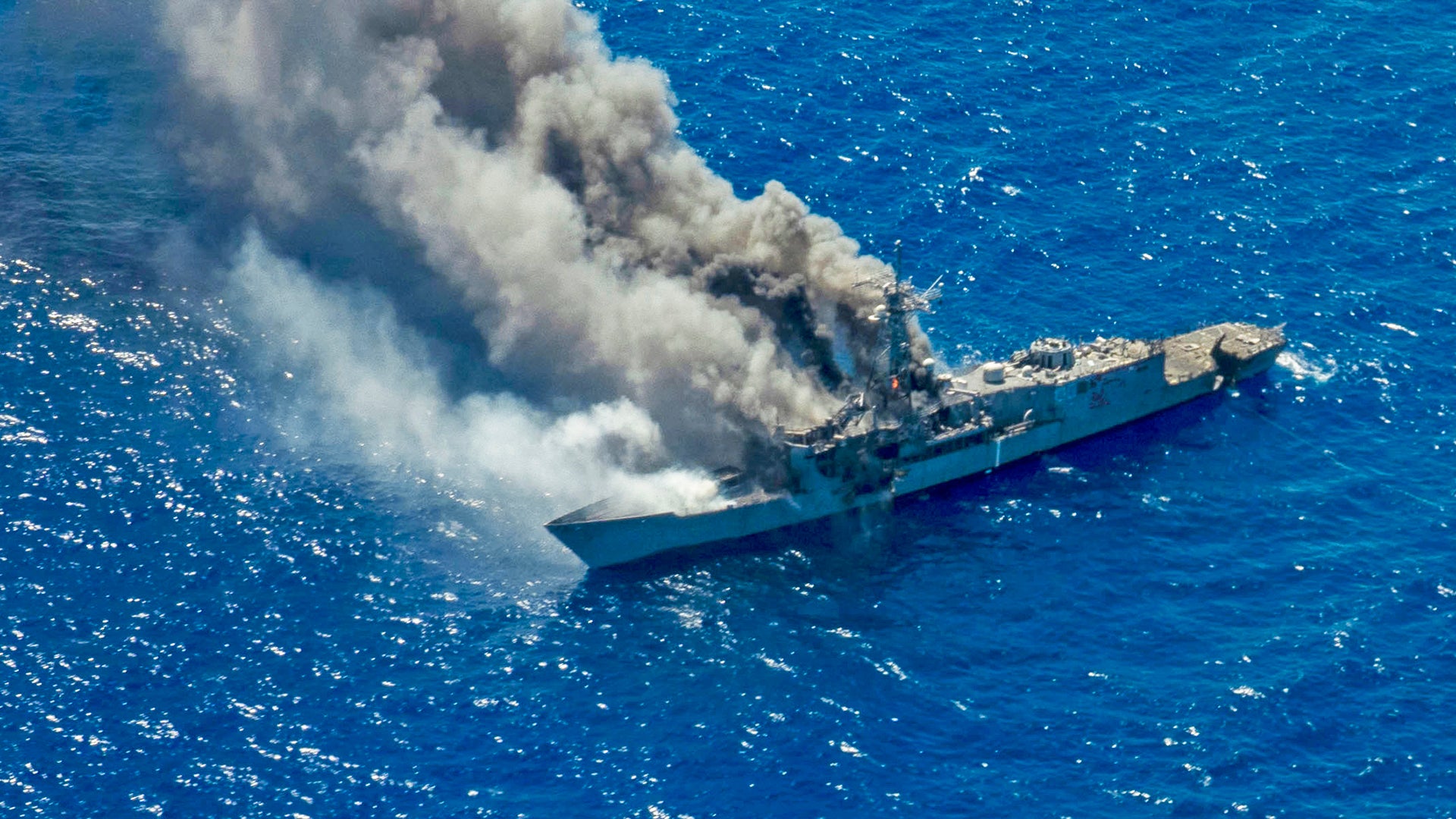On August 15th, 2021, the U.S. Navy led the execution of a Sinking Exercise (SINKEX) off Hawaii as part of the ongoing and unprecedently massive Large Scale Exercise 2021. Not a whole lot is known about this SINKEX just yet, but multiple types of weapons were involved, including a Super Hornet-launched AGM-154 Joint Stand-Off Weapon (JSOW) and stealthy Naval Strike Missiles (NSM) launched from the Marine Corps’ new unmanned ground-based launcher vehicles. P-8s were also involved, which could mean they employed AGM-84 Harpoons. There are likely a number of other weapons that were fired at the frigate, too, as is typically the case during SINKEXs, which are prized and infrequent training and developmental opportunities.
The incorporation of the Navy-Marine Expeditionary Ship Interdiction System (NMESIS) is a major development for this SINKEX. The system uses an unmanned vehicle based on the Joint Light Tactical Vehicle’s chassis, known as Remotely Operated Ground Unit Expeditionary-Fires (ROGUE-Fires), that carries twin Naval Strike Missile launch canisters.
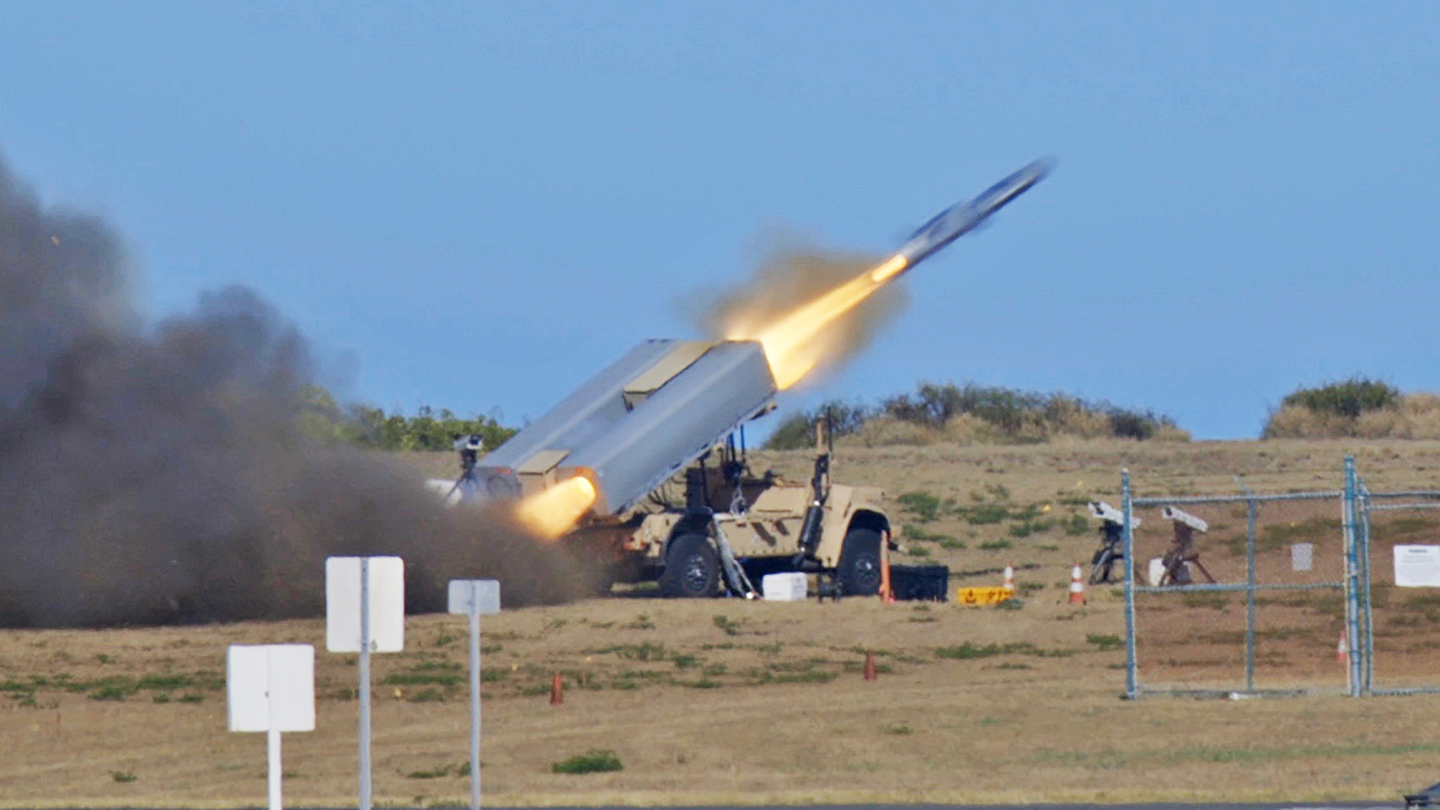
The concept is set to underpin the Marine Corp’s new expeditionary anti-ship capability, which is a core component of a major remodeling of the force to be better suited for supporting distributed operations, especially in the Pacific Theater, during a peer-state conflict.
During the live-fire drill, two NSMs were employed, one from a launcher delivered by C-130 and another by one delivered by LCAC hovercraft. The Naval Strike Missiles apparently both struck the ex-USS Ingraham just as planned after flying over 100 miles to their target. This is a big accomplishment for the Marines’ anti-ship missile system program, which is only around two years old. You can read much more about NMESIS in this past piece of ours.
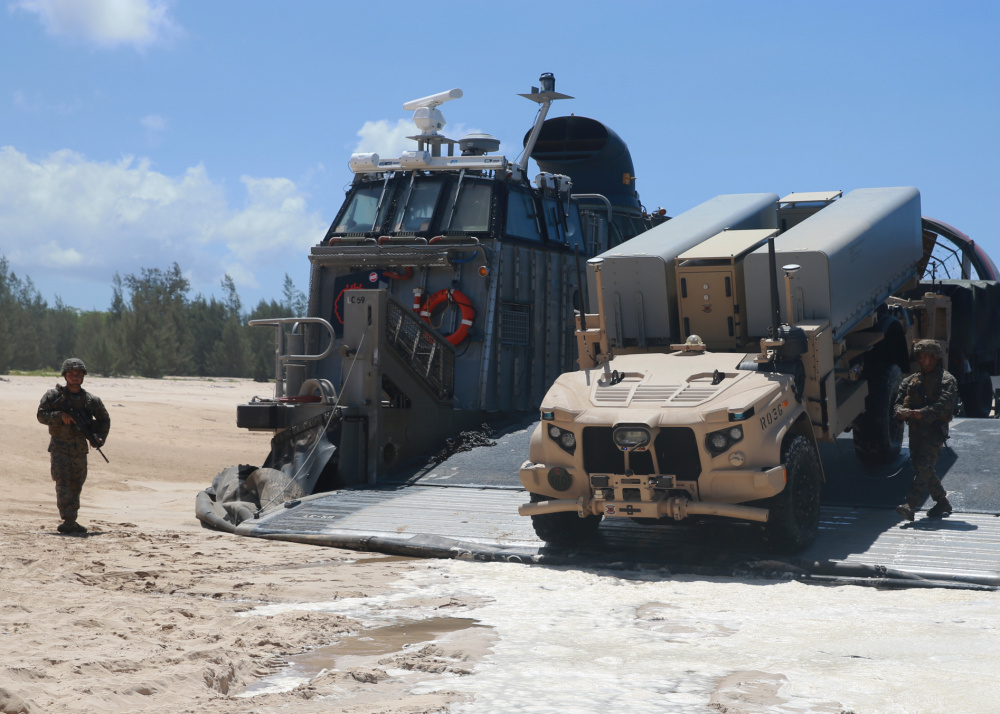
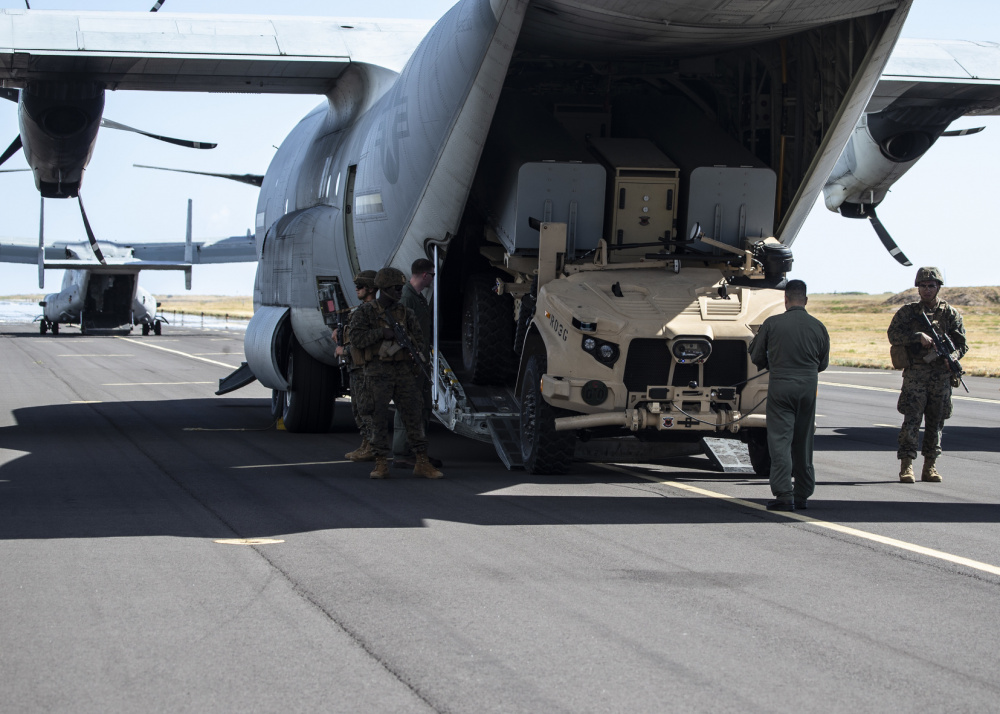
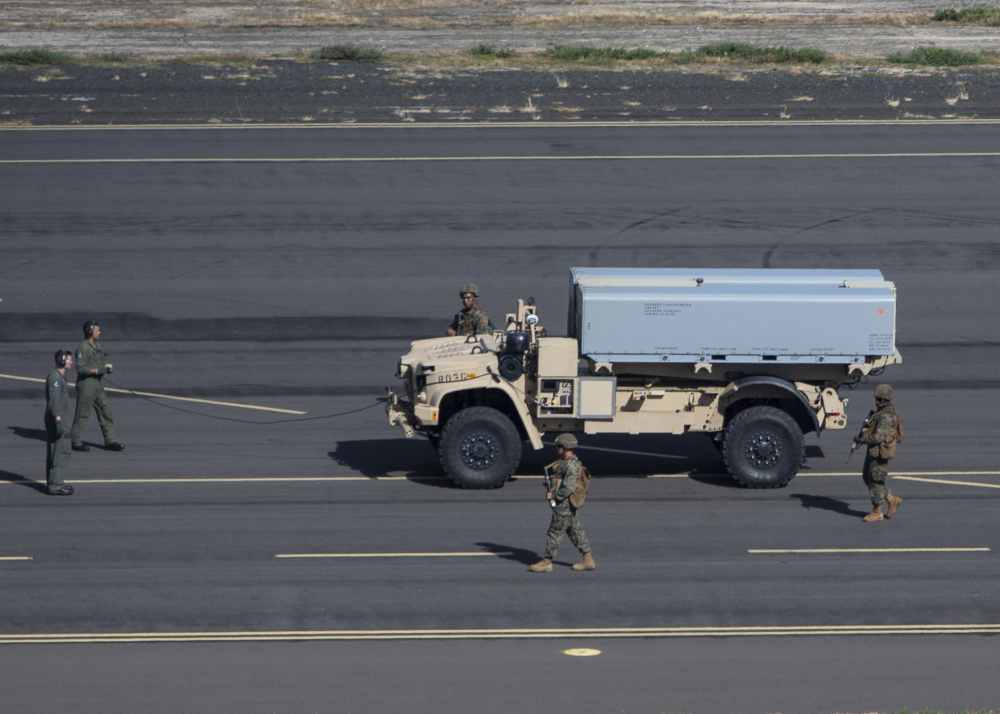
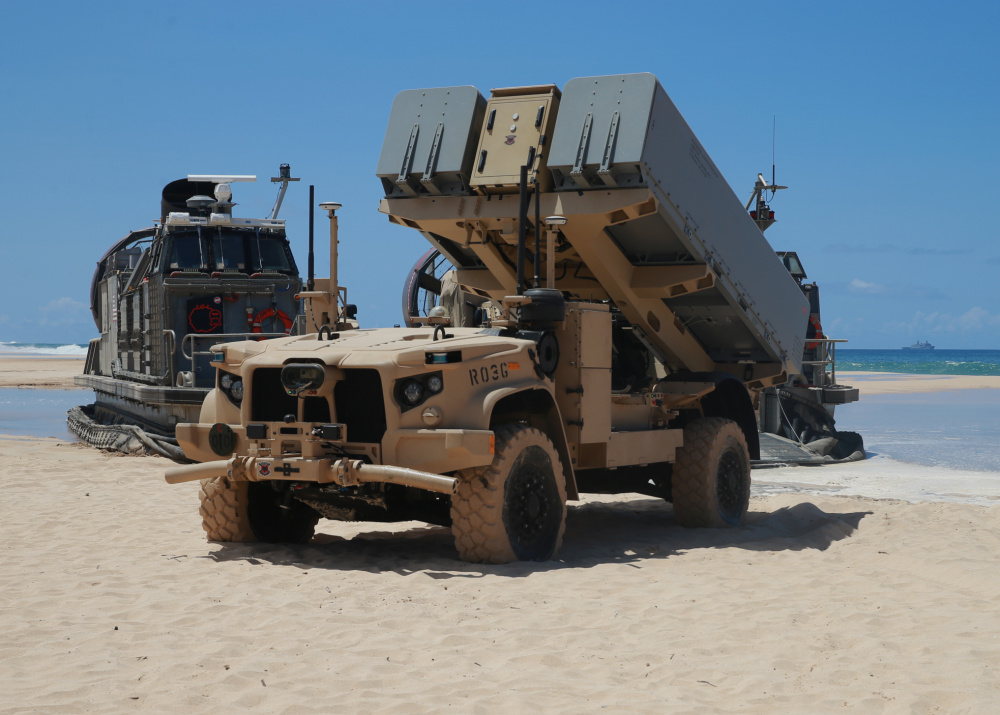
While the Marine Corps’ NSM firings were clearly a big part of the SINKEX, it was still just one facet of what all came together during the evolution. Large Scale Exercise 2021 is all about integration across multiple domains and great distances using complex networks. A release about the NSM test states:
LSE 21 was a live, virtual and constructive scenario-driven, globally-integrated exercise with activities spanning 17 time zones. LSE 21 applied and assessed developmental warfighting concepts that will define how the future Navy and Marine Corps compete, respond to crises, fight and win in conflict.
…
SINKEX, the exercise scenario involving NMESIS, provided a testing environment for new and developing technologies to connect, locate, identify, target and destroy adversary threats in all domains, culminating in the live-fire demonstration of the naval strike missile against a sea-based target. During the exercise, forward-deployed forces on expeditionary advanced bases detected and, after joint command and control collaboration with other U.S. forces, responded to a ship-based adversary. Simultaneous impacts from multiple, dispersed weapons systems and platforms across different U.S. services—including NMESIS—engaged the threat.
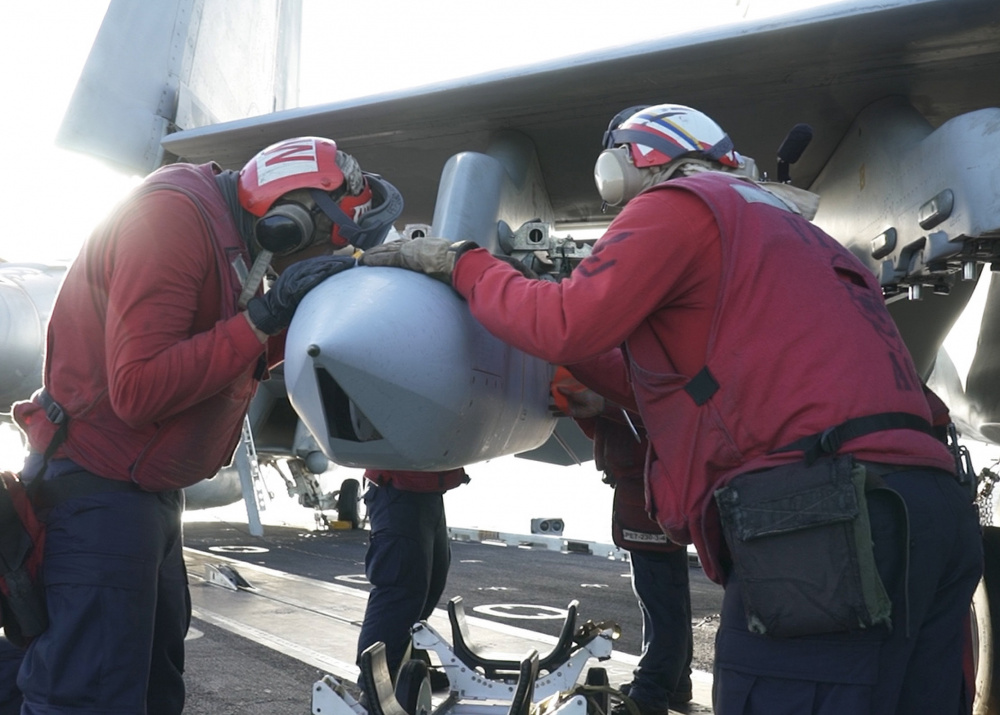
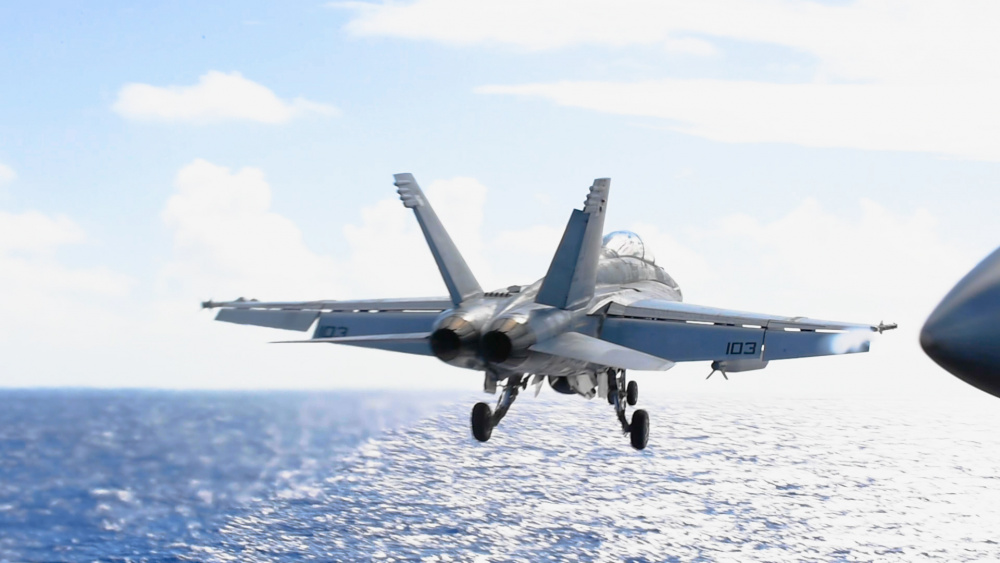
As for the ex-USS Ingraham, the Oliver Hazard Perry class frigate was the last example ever built. She was just decommissioned in 2015 before being put on the roster of ships set aside for SINKEXs, which you can read more about here.

As you can see in the image at the top of this story, she was a tough ship, taking who knows how many hits from various weapons while still staying afloat. Her forward superstructure is totally blown out and she has another deep rupture on her stern, among other injuries. It is worth noting that it is standard practice to seal up the target ship’s compartments and remove all major combustibles prior to a SINKEX, which offers a bit more survivability than what a normal operational configuration could offer, although she has no sailors executing damage control, either.
Usually, we do get some clips of at least a few of the impacts of the weapons used in these drills, although this being a more sensitive, non-international exercise could change that.
We will be sure to update this post with more information, and hopefully video, when we get it.
Contact the author: Tyler@thedrive.com
